
This is a research project. A new modulation method 'Advanced PCC-OFDM' is developed. With this method you can construct a modulation, which is fast decaying in frequency domain, while maintaining spectral efficiency.
There is also a subproject to calculate cancellation carriers the polynomial way. This subproject can be found here.
The frequency domain representation of a timelimited function is given by:

The translations of the functions sinc(x) := sin(πx)/πx are a orthonormal basis of the frequency domain of all limited functions in time domain.
If you use only n single carriers (sinc functions) this can be written as:

Translations of the sinus gives only factors of +1 or -1. Then simply build the common denominator.
Afterwards, the denominator is a polynomial of fix degree (degree n).
The nominator is a polynomial of up to degree n-1, which depends on the coefficients.
To construct a new modulation scheme, which is decaying fast in frequency domain, we use only polynomials of up to degree m<n. We construct a m dimensional orthonormal basis of the subspace of this fast decaying functions. For modulation we use the new basis linear combinations instead of the subcarriers. If you drop l=n-m dimensions, the decay of amplitudes is as fast as O(1/Δω^(l+1)), the power spectrum decays with O(1/Δω^(2l+2)).
Conventional PCC-ODFM uses only one dimension. By using m<n, we could provide functions with fast decay (better adjacent channel power), while maintaining spectral efficiency.
Spectral efficiency can be very high, since you can use normally unused guard bands. Additionally it should be possible to reduce guard interval time or even use no guard interval (no windowing needed + functions are starting smooth).
Since matrix multiplications are computational expensive, you should divide your carriers into smaller groups. If group size is perhaps 16 or lower computational demand is acceptable.
A more detailed article is available as PDF (english, german).
Sourcecode is available from project web site.
| Advanced PCC-OFDM | OFDM with CP and windowing | |
|---|---|---|
| Multipath fading | very good | very good |
| Spectral efficiency | can be even better, depends on parameters | good |
| Adjacent channel power | can be very good, depends on parameters | average, depends on carrier count |
| PAPR | bad | bad |
| ICI | very good between groups, bad inside groups | bad |
| Computational demand | higher, depends on groupsize | today, you can say low |
| Scalability | very good | good |
| MIMO | possible | possible |
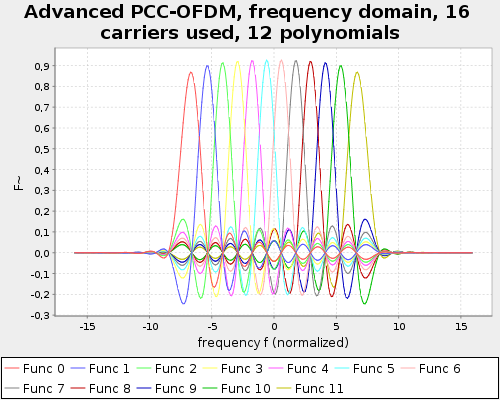 | 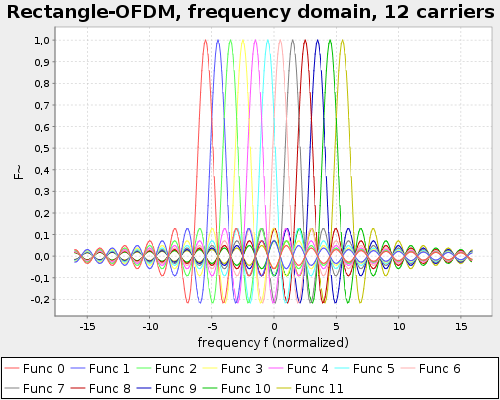 |
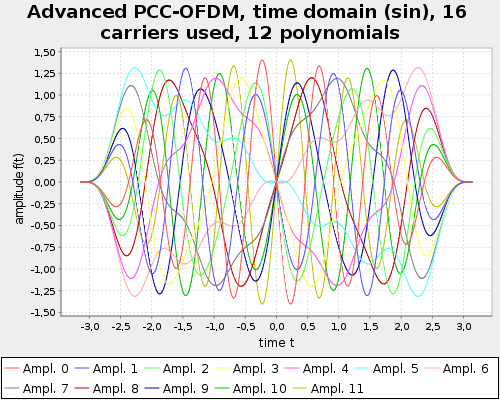 | 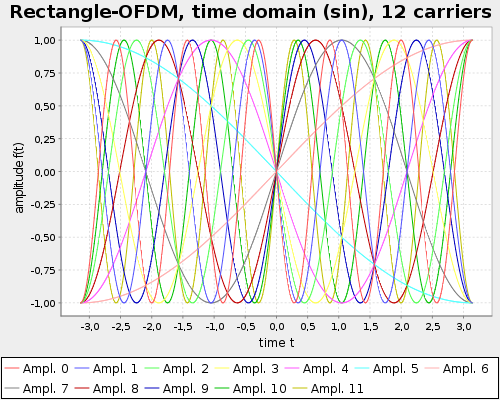 |
 | 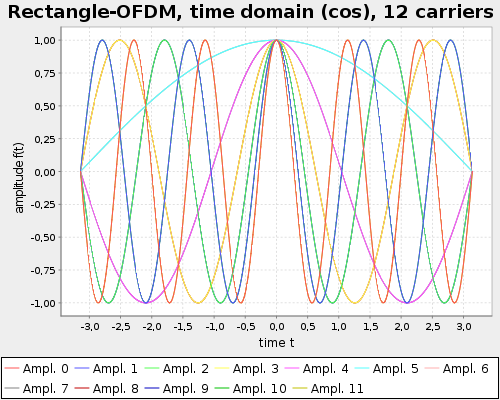 |
 |  |
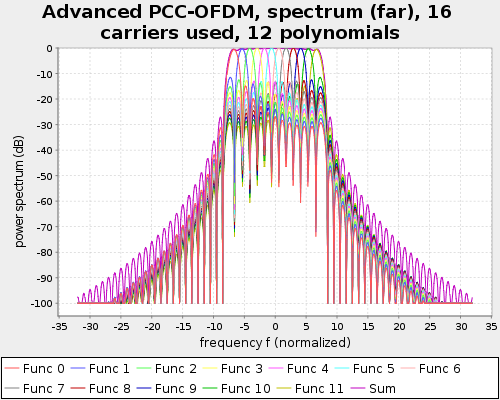 | 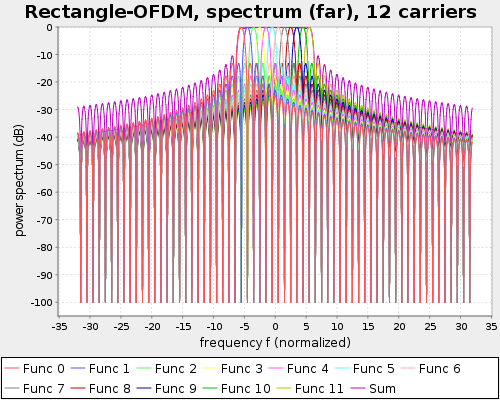 |
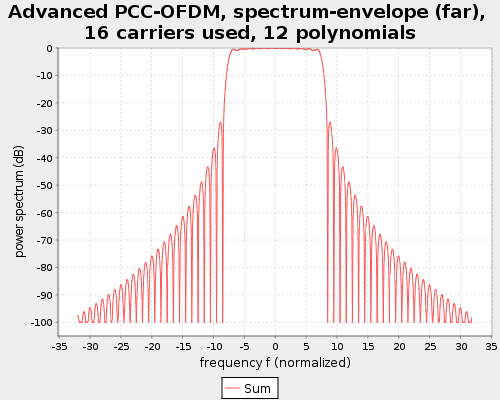 | 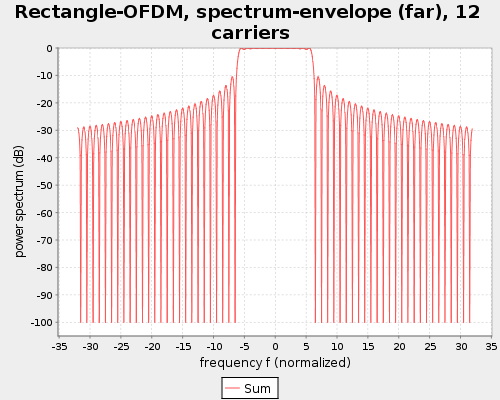 |
| 8 carriers used, 1 dimension dropped, 7 modulated dimensions | (PDF, OFDM-Comparison, Dropped Dims) |
| 8 carriers used, 2 dimension dropped, 6 modulated dimensions | (PDF, OFDM-Comparison, Dropped Dims) |
| 8 carriers used, 3 dimension dropped, 5 modulated dimensions | (PDF, OFDM-Comparison, Dropped Dims) |
| 8 carriers used, 4 dimension dropped, 4 modulated dimensions | (PDF, OFDM-Comparison, Dropped Dims) |
| 16 carriers used, 1 dimension dropped, 15 modulated dimensions | (PDF, OFDM-Comparison, Dropped Dims) |
| 16 carriers used, 2 dimension dropped, 14 modulated dimensions | (PDF, OFDM-Comparison, Dropped Dims) |
| 16 carriers used, 3 dimension dropped, 13 modulated dimensions | (PDF, OFDM-Comparison, Dropped Dims) |
| 16 carriers used, 4 dimension dropped, 12 modulated dimensions | (PDF, OFDM-Comparison, Dropped Dims) |
| 16 carriers used, 6 dimension dropped, 10 modulated dimensions | (PDF, OFDM-Comparison, Dropped Dims) |
| 16 carriers used, 8 dimension dropped, 8 modulated dimensions | (PDF, OFDM-Comparison, Dropped Dims) |
| 24 carriers used, 4 dimension dropped, 20 modulated dimensions | (PDF, OFDM-Comparison, Dropped Dims) |
| 24 carriers used, 6 dimension dropped, 18 modulated dimensions | (PDF, OFDM-Comparison, Dropped Dims) |
| 24 carriers used, 8 dimension dropped, 16 modulated dimensions | (PDF, OFDM-Comparison, Dropped Dims) |